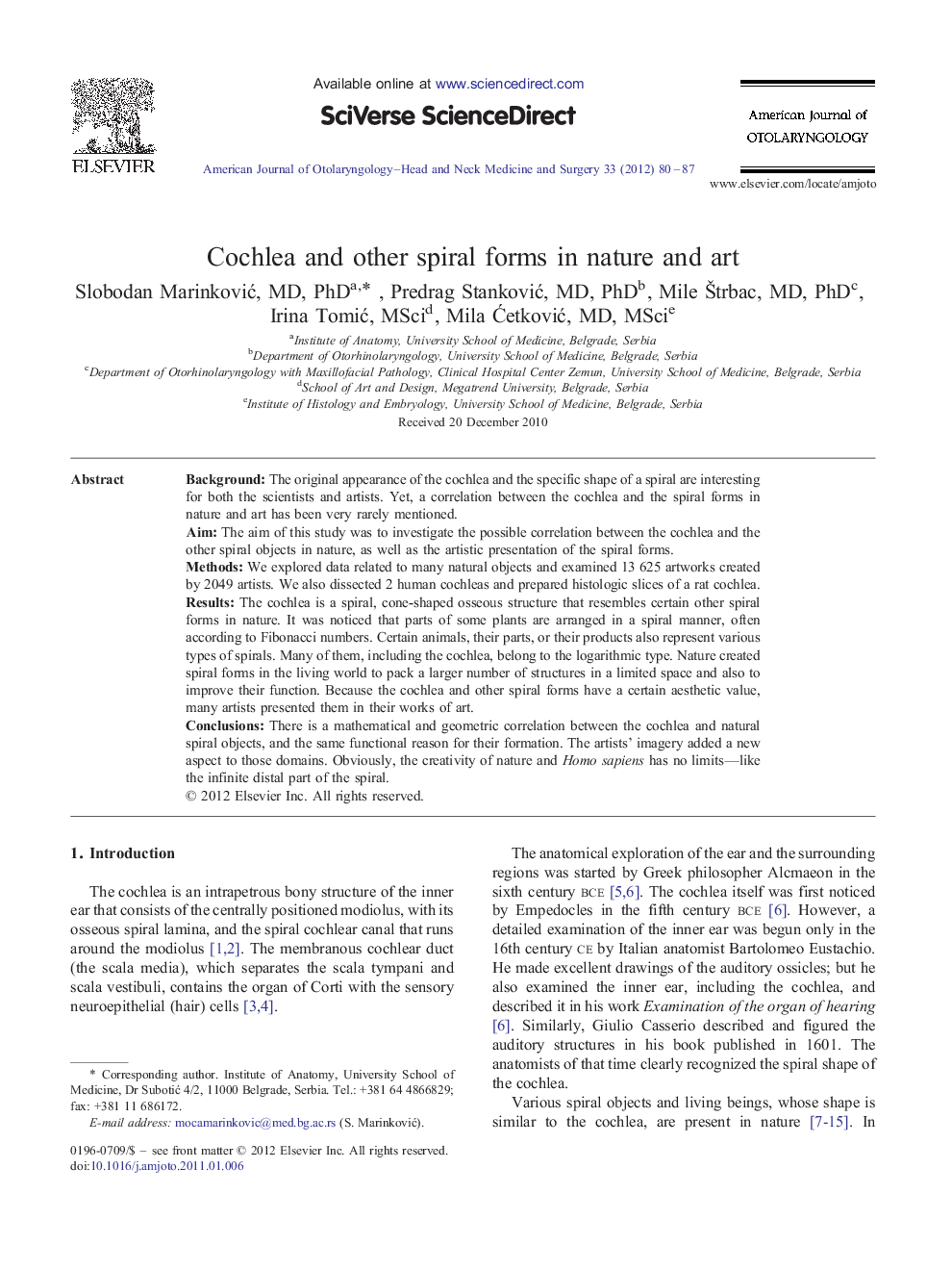| Article ID | Journal | Published Year | Pages | File Type |
|---|---|---|---|---|
| 4104019 | American Journal of Otolaryngology | 2012 | 8 Pages |
BackgroundThe original appearance of the cochlea and the specific shape of a spiral are interesting for both the scientists and artists. Yet, a correlation between the cochlea and the spiral forms in nature and art has been very rarely mentioned.AimThe aim of this study was to investigate the possible correlation between the cochlea and the other spiral objects in nature, as well as the artistic presentation of the spiral forms.MethodsWe explored data related to many natural objects and examined 13 625 artworks created by 2049 artists. We also dissected 2 human cochleas and prepared histologic slices of a rat cochlea.ResultsThe cochlea is a spiral, cone-shaped osseous structure that resembles certain other spiral forms in nature. It was noticed that parts of some plants are arranged in a spiral manner, often according to Fibonacci numbers. Certain animals, their parts, or their products also represent various types of spirals. Many of them, including the cochlea, belong to the logarithmic type. Nature created spiral forms in the living world to pack a larger number of structures in a limited space and also to improve their function. Because the cochlea and other spiral forms have a certain aesthetic value, many artists presented them in their works of art.ConclusionsThere is a mathematical and geometric correlation between the cochlea and natural spiral objects, and the same functional reason for their formation. The artists' imagery added a new aspect to those domains. Obviously, the creativity of nature and Homo sapiens has no limits—like the infinite distal part of the spiral.
